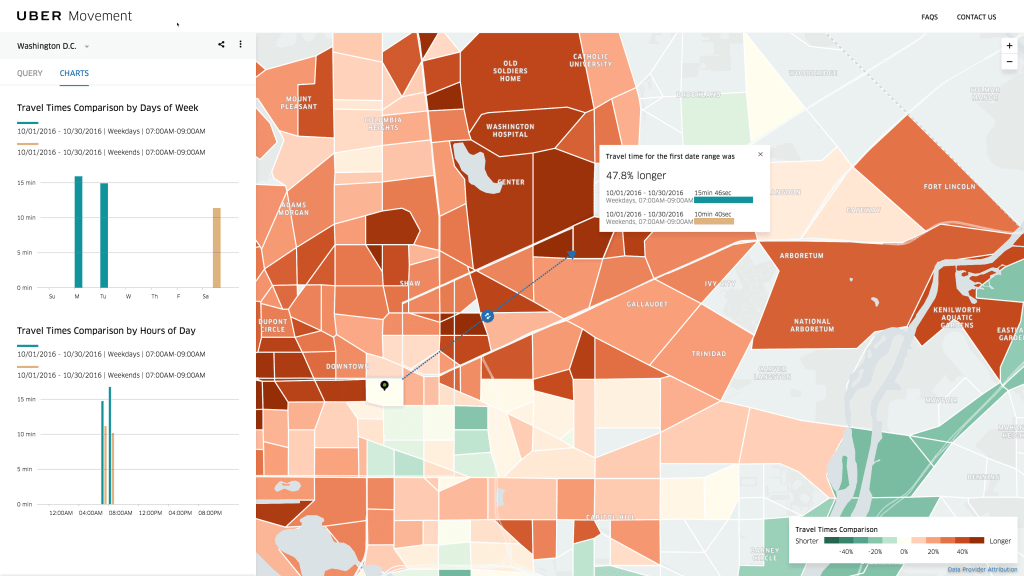 Olaf Carlson-Wee is the founder of Polychain Capital , which manages a hedge fund that invests exclusively in blockchain-based assets.
Olaf Carlson-Wee is the founder of Polychain Capital , which manages a hedge fund that invests exclusively in blockchain-based assets.
Blockchain technology is quickly expanding beyond bitcoin. While many proponents of bitcoin see the blockchain as no more than competition for existing payment methods or gold, I believe blockchain technology is the harbinger of things the world has never before seen.
In a world with many blockchains and hundreds of tradable tokens built on top of them, entire industries are automated through software, venture capital and stock markets are circumvented, entrepreneurship is streamlined and networks gain sovereignty through their own digital currency. This is the next phase of the internet.
To date, bitcoin companies have received more than $1 billion in venture funding — the entire industry was built on the shoulders of VCs. Yet Ethereum, a blockchain protocol that allows arbitrarily complex financial transactions to be encoded by anyone and executed in a provably accurate manner by a distributed network, has seen a de minimis amount of VC investment. Rather, open participation crowdsales run through financial contracts built on Ethereum have raised more than $250 million from backers all around the world.
So why is less VC money flowing into Ethereum? Perhaps it is more risky, and perhaps investments in failed bitcoin companies has lowered interest. Perhaps. But importantly, entrepreneurs now have an alternate route for funding their projects. We are seeing entrepreneurs issuing their own blockchain-based tokens to raise money for their networks, sidestepping the traditional, exclusive world of venture capital altogether. The importance of this cannot be overstated — in this new world there are no companies, just protocols.
Using this new model, entrepreneurs create blockchain-based tokens that represent ownership in the network they are building, and also act as fuel for their network. For an investor, there are not shares of a company available, only the blockchain-based token. As the blockchain space expands, disproportionate returns will go to holders of the actual tokens, not traditional venture investors betting on a shares of a company. These tokens are application specific — they are not meant to be general-purpose units of value like bitcoin. For example, tokens built on Ethereum like REP and GNT power a decentralized prediction market and a peer-to-peer market for renting computation, respectively.
These application-specific tokens, or app-tokens, are built on top of existing general-purpose blockchains like Bitcoin and Ethereum. For the first time, open-source project creators can directly monetize their open-source network. Historically, successful open-source projects like the torrent protocol or the Tor network were not directly monetized at the protocol level. Now, the founder of a decentralized file storage network can issue blockchain-based tokens that represent ownership in the network.
However, these tokens are not like stock certificates, which represent ownership but have no real use. App-tokens are actually used in the network to participate. In the file-storage market example, they are used to prove file ownership and buy and sell storage space. The founder of the network keeps roughly 10 percent of the tokens for themselves and their founding team, and if their network becomes popular, the demand for tokens rises, and because the supply of the token is fixed, the price increases. This means that founders can monetize their networks directly by simply holding their tokens and making the network useful. If they need liquidity to continue funding the project, they can simply sell the tokens on the open market.
In addition to rewarding founders, these app-tokens allow participants in networks to actually own a piece of the network. This network equity ownership is unprecedented. Consider how many networks the modern western internet user is a part of — Facebook, LinkedIn, Twitter, Uber, Airbnb, eBay, Etsy, Tumblr — the list goes on. In each of these cases, the network’s value is created by the users, but the value each individual user generates goes to the owners of the network. In this new blockchain-based model, that value is actually given back to the users of the network, proportional to their contribution.
What this means is that what ultimately disrupts many of the major web services created in the last decade could be peer-to-peer protocols, not companies. This would be similar to the effect that the torrent protocol had on media companies, but on a much larger scale. The result would be twitter the protocol without Twitter the company, facebook without Facebook, uber without Uber.
And as an investor, for the first time, it is possible to buy a portion of these networks, which will power the future infrastructure of the internet. Investing directly in TCP/IP (packets), SMTP (email), HTTPS (encryption) or another low-level internet protocol in the early 1990s would be extremely valuable today.
If this sounds complicated, it’s because it is. To be sure, the blockchain space is still mostly in a phase of experimentation, but the first breakout apps will be explosive because they financially incentivize users to participate in the network. Imagine being able to actually make money when you contribute on social media.
Bitcoin’s market share has slowly dropped over the last several years, and while I believe that bitcoin will continue to grow, rapid growth in other parts of the blockchain ecosystem is imminent.
The entire market capitalization of blockchain-based assets is $13 billion today, a rounding error when compared to the current value of the systems which blockchain technology could potentially unseat. When decentralized blockchain protocols start displacing the centralized web services that dominate the current internet, we’ll start to see real internet-based sovereignty. The future internet will be decentralized.
© Source: http://feedproxy.google.com/~r/Techcrunch/~3/0OMSK5W1EVU/
All rights are reserved and belongs to a source media.
 Двух несовершеннолетних с сотрясением мозга госпитализировали в Житомирскую детскую областную больницу после столкновения автомобилей Peugeot и Lanos на 156-м километре трассы Киев-Чоп, сообщила пресс-офицер патрульной полиции города Житомира Дина Корчевная.
Двух несовершеннолетних с сотрясением мозга госпитализировали в Житомирскую детскую областную больницу после столкновения автомобилей Peugeot и Lanos на 156-м километре трассы Киев-Чоп, сообщила пресс-офицер патрульной полиции города Житомира Дина Корчевная. 

 В Раховском районе Закарпатской области на автодорогу сошла снежная лавина, сообщает пресс-служба управления Государственной службы чрезвычайных ситуаций Украины.
В Раховском районе Закарпатской области на автодорогу сошла снежная лавина, сообщает пресс-служба управления Государственной службы чрезвычайных ситуаций Украины. 
 Olaf Carlson-Wee is the founder of Polychain Capital , which manages a hedge fund that invests exclusively in blockchain-based assets.
Olaf Carlson-Wee is the founder of Polychain Capital , which manages a hedge fund that invests exclusively in blockchain-based assets. 
 Uber is opening up in an area where it might make sense competitively for it to stay more closed off: The ride-hailing company’s new Movement website will offer up access to its data around traffic flow in scores where it operates, intended for use by city planners and researchers looking into ways to improve urban mobility.
Uber is opening up in an area where it might make sense competitively for it to stay more closed off: The ride-hailing company’s new Movement website will offer up access to its data around traffic flow in scores where it operates, intended for use by city planners and researchers looking into ways to improve urban mobility. 
 This year’s CES displayed a pretty broad mix in terms of production areas, with plenty of representation for categories ranging from wearables, to health, to VR and beyond – but the clear winners were two companies, and both succeeded primarily through partnerships than by direct demonstration of their own consumer products.
This year’s CES displayed a pretty broad mix in terms of production areas, with plenty of representation for categories ranging from wearables, to health, to VR and beyond – but the clear winners were two companies, and both succeeded primarily through partnerships than by direct demonstration of their own consumer products. 
 The devastating news of a mass-shooting at Fort Lauderdale-Hollywood Airport on Friday has shaken the world, the incident involved gunman Esteban Santiago opening fire indiscriminately, which led to the death of five and injuring of eight.
The devastating news of a mass-shooting at Fort Lauderdale-Hollywood Airport on Friday has shaken the world, the incident involved gunman Esteban Santiago opening fire indiscriminately, which led to the death of five and injuring of eight. 
 After two years of investigation, Canada’s competition watchdog has decided to close its probe on Apple last Friday. According to the Competition Bureau statement :
After two years of investigation, Canada’s competition watchdog has decided to close its probe on Apple last Friday. According to the Competition Bureau statement : 
 At CES, if you head over to the South Hall of the Las Vegas Convention Center, head all the way to the back, and navigate your way through a labyrinth of passages, you’ll find where the Naughty America booth has been erected, which the company is using to demo its virtual reality porn.
At CES, if you head over to the South Hall of the Las Vegas Convention Center, head all the way to the back, and navigate your way through a labyrinth of passages, you’ll find where the Naughty America booth has been erected, which the company is using to demo its virtual reality porn. 
 Про це повідомляється у Twitter консульської служби Міністерства закордонних справ України.
Про це повідомляється у Twitter консульської служби Міністерства закордонних справ України. 
 До розчищення автомобільних доріг залучено 2 499 одиниць техніки та 3 412 осіб
До розчищення автомобільних доріг залучено 2 499 одиниць техніки та 3 412 осіб 

